In the last three months, the path of molten wax has lead me from my home in America to Thailand, Malaysia and now Japan. There have been many unexpected discoveries along the twists and turns but the biggest surprise of all was how much each foreign place has reminded me of my past and where I came from. It turns out that I took a leap into the unknown only to land promptly back down at my roots.
I have always assumed that most Chinese Nationalists were like my grandparents who fled to Taiwan after the Cultural Revolution. What a surprise it was to find that Thailand was another option in which to create a new life for themselves. With over 8.5 million Chinese immigrants, Thailand has more overseas Chinese than any other country in the world! I wondered what sort of person I would have become if my grandparents had ended up in Thailand instead of Taiwan? As I painted my images of fruit, sea creatures, and colorful landscapes, I daydreamed about what my life could have been like in this beautiful land of plenty.
Although batiks are often sold around the world as a “traditional” Thai product, they too are immigrants from another land—originating either from neighboring China to the north, or Indonesia to the south. Like the people however, they have adapted to the lush and colorful landscape of this country. It is obvious that batiks have become an important part of Thailand, both culturally and economically. There is a drastic difference however between Thai batik and Batik in Thailand. The first is a product of Thailand, the second is sold in Thailand. Thai batik has expanded with the growth of tourism and is now an essential source of income for many artists here. The bright colors and lively designs of these “tourist” batiks are representative of this country, providing visitors with a memento of Thailand even if the fabric itself is not representative of batik in Thailand.
In Malaysia, it was impossible not to be identified as Chinese in a country so strictly divided between the Chinese, Malay and Indian populations. The hatred and distrust between them is hardly a surprise when ethnicity determines one’s portion of the government funded pie. As the minority, the Chinese are sick of being handed the left-over crust.
I had not known before I arrived that there was a difference between being Malay and being Malaysian. Imagine my surprise to discover that here, the birthplace of your ancestors is actually more important than your own! In the competitive fashion world of Malaysian batik, a lack of government support and funding is devastating to the batik artists and entrepreneurs of Indian or Chinese descent.
Batiks are ubiquitous on the streets, stores, runways and museums of Malaysia—making them a public statement of this divide between ethnicities. While almost all Malaysians have garments made of batik fabric; the Islamic religion of the Malays limits them to wearing loose, long-sleeved “baju kurungs” and “baju kebayas,” while the Chinese traditionally sport form fitting “qipaos” and the Indians prefer batik “saris” or “salwar kameez”.
Although all ethnicities wear batik, the Malays insist on claiming it as their own since it is their ancestors who brought it over from the Malay Peninsula of Indonesia. The result is a sort of secret society in which batik techniques and processes are horded and hidden. As the premier center of batik study in Malaysia, The National Craft Institute (IKN) is made up of 95% Malay students and shows just how unbalanced the industry is. This is a constant frustration for the many Chinese, Indian and ex-patriot batik designers and artists who are barred from batik instruction, supplies and funding. What many Malays don’t realize is that in the process of keeping batik to themselves, they are also hiding it from potential clients and customers of batik. A French designer describes batik as a "sunset industry" which is dying because of the secrecy and distrust between designers, manufacturers and suppliers. Thus, artists and entrepreneurs of all ethnicities must work together if Malaysian batik is to survive.
The government does see batik as a important part of Malaysian heritage and attempts have been made to keep the medium alive. They host batik conventions yearly, bring designers to fashion shows abroad and even mandate that all government officials and school children wear batik on Fridays. For the most part however, such efforts have centered around erasing the image of batik as “boring” and “traditional” and bringing new, contemporary batik garments into main-stream international fashion. While these events have been successful in introducing batiks to the world, it has been done at the expense of the intricately colorful designs that have always demarcated true “Malaysian” batik.
Now in Japan, I am reminded once again of my tiny birth-country of Taiwan. Not only is the food, culture, landscape and language similar but in terms of appearance, I blend right in – an experience I am not accustomed to after growing up in the Mid-West of America. After just a few short days in Japan, I already feel completely at home in this peaceful country, at ease with the artists I have met and a close bond with my classmates at the Nara College of Arts and Crafts who have all been so eager to share their knowledge and love of Rozome with me.
The Japanese form of batik is called “rozome” after “ro” which means “wax” and “zome” meaning “to dye.” A technique used traditionally for decorating Kimonos and screens, the number of Rozome artists has also declined with the drop in Kimono wearing and sales. Unlike Malaysia however, the Japanese see that the solution lies in embracing their culture—not erasing it. Instead of hosting events that feature new, modern designs taken from Western designers, Rozome events here focus on educating foreigners and youngsters on the importance of this art to Japan and it’s unique and rich history. Not just government officials, but all citizens and even foreigners are encouraged to wear kimonos everyday as a result of the “kimono passport” which gives discounts on entry tickets, taxi fares and store merchandise for those sporting the traditional Japanese look.
Japanese rozome further brings me back to my Chinese roots with its simple elegance, focus on balance and earth toned colors. Even the kimono itself is a garment heavily influenced by traditional Han Chinese clothing as a result of Japanese embassies to China in the fifth century.
Problems and interactions between cultures; as well as visa and immigration issues, have made me think of and question the line “good fences make good neighbors” from Robert Frost’s “Mending Wall” in which one man questions why he and his neighbor must rebuild the stone wall dividing their farms each spring. What is the point of theses fences between countries and how can we break them down peacefully without violence and war? Why does one country feel the need to overtake another and why do people feel a need for nationality? What is in a name? If the entire world were one name, would we be able to co-exist peacefully and help each other when necessary? I want desperately to believe in a peaceful and harmonious world without borders but ask myself how it can be possible when it is human nature to put up walls between ourselves? Why are some people so open and willing to allow different people and new ideas in while others simply close themselves against them?
After three months, I have become accustomed to the fact that there is no one around me in which to ask or answer my questions. Thus, I am learning to listen to myself and accept that there is no one around to admire or condemn my bouts of inspiration. Lonely at first, I now find that I am able to think more slowly and look more closely at the world around me when there is no pressure to maintain a conversation. Every day I open my eyes to new things and am amazed at the infinite variety of colors, shapes and patterns that appear. Somehow my own creativity drives me more than grades or teachers ever have and I feel the need to simply produce as quickly as I can, before the vision escapes me. Artist’s block was and still is my greatest fear for this journey and this flood of inspiration is a relief. The problem so far has been in choosing between all of the ideas I have and I cannot wait to make them into reality. With each new creation of wax and dye on fabric, I hope to move one step closer to the answer of my questions. Although there will be many detours and obstacles in my way, I know I will never truly be lost because in the end, it is the journey that matters, not the destination.
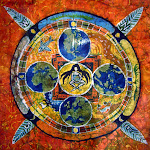
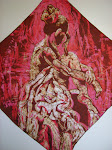

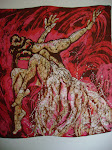


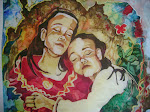

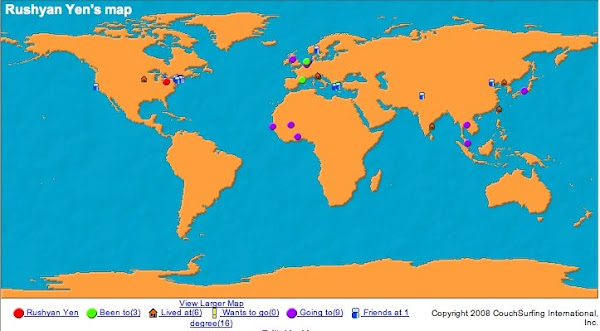
1 comment:
^o^; Sorry Ru-shyan, I have been lazy and hadn't gotten around to doing anything but skimming your journal today. I really enjoyed reading your first quarterly report and will be very interested to see your next one discussing your experiences in Japan retrospectively. The thing that struck me the most in reading it was the bit about being lonely at first, and then finding the advantages of traveling alone. I was apprehensive about traveling India on my own, but when I actually did it, I was grateful for being alone. The presence of others would have stifled my focus on photography and self interpretation of my surroundings. It also allowed me to have wonderful conversations with people I would have never met had I been in a group already.
Post a Comment